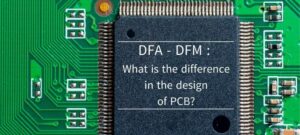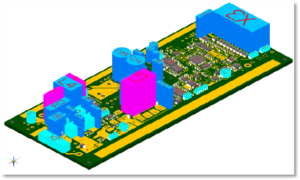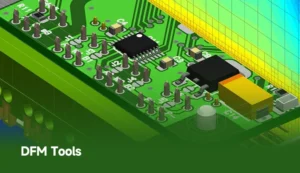What is DFM, DRC, DFF, DFA, DF? These are terms used every day in the world of rapid PCB layout regarding manufacturing analysis, and they are often used interchangeably. But what exactly is DFM? Why is it such an important but often overlooked aspect of the PCB design process?
First, let’s clarify some terms. DFM stands for “Design for Manufacturability”. “It is the process of arranging the PCB layout topology to alleviate the problems encountered in the PCB manufacturing and placement process required to fabricate an electronic system.” Solving manufacturing problems is known as “design for manufacturing” (DFF), while solving assembly problems in the design process is called “design for placement” (DFA). Together, they make up the DFM analysis.
In many cases, the term DRC (which stands for Design Rule Check) is also used interchangeably with DFM, creating further confusion. This is understandable, as DRC issues detected during manufacturing do have a direct impact on PCB manufacturability. However, DRC is distinctly different from DFF and DFA. Please think of DRC as a hard pass/failure detection of problems in the PCB. The problem either exists or it does not. In engineering design, DRC is used to ensure that the connectivity of the PCB layout accurately reflects the connectivity defined in the board-related schematic. However, connectivity is only one aspect of DRC. ” R ” stands for rule. The rule is mainly used to define the minimum spacing allowed between various PCB objects on the entire PCB or various layers, nets or areas of the PCB. In engineering, the spacing may directly affect circuit performance. In manufacturing, spacing may play a key role in the ability to fabricate or assemble PCBs. As a result, DRC becomes a subset of DFM, provided that the rules used reflect the manufacturer’s requirements for spacing. Otherwise, DRC is used only for electrical verification.
The two main components of DFM, DFF and DFA, are more subtle than DRC. While DRC detects very specific differences from the expected interconnects, DFM identifies issues in the PCB topology that could create manufacturing problems. More importantly, DRC defects will be present in every copy of the PCB manufactured, so if any short piece is missing from the DRC, every PCB will contain that short piece regardless of how many PCBs are produced. Conversely, if the same number of PCBs contain DFM issues, the problem may only appear in some PCBs, while others function correctly as expected.
For example, based on the schematic, a PCB layout created by the design tool that contains very thin copper sheets will be correct. If spaced properly, it will pass the DRC. however, equally thin strips may come off the physical PCB and inadvertently connect themselves to other copper components during assembly, causing a short on some PCBs and a short on others. Therefore, the strips will pass DRC verification, but in actual production, the strips may cause some PCBs to fail. Without DFM, this problem will continue and lead to scrap or rework.
















